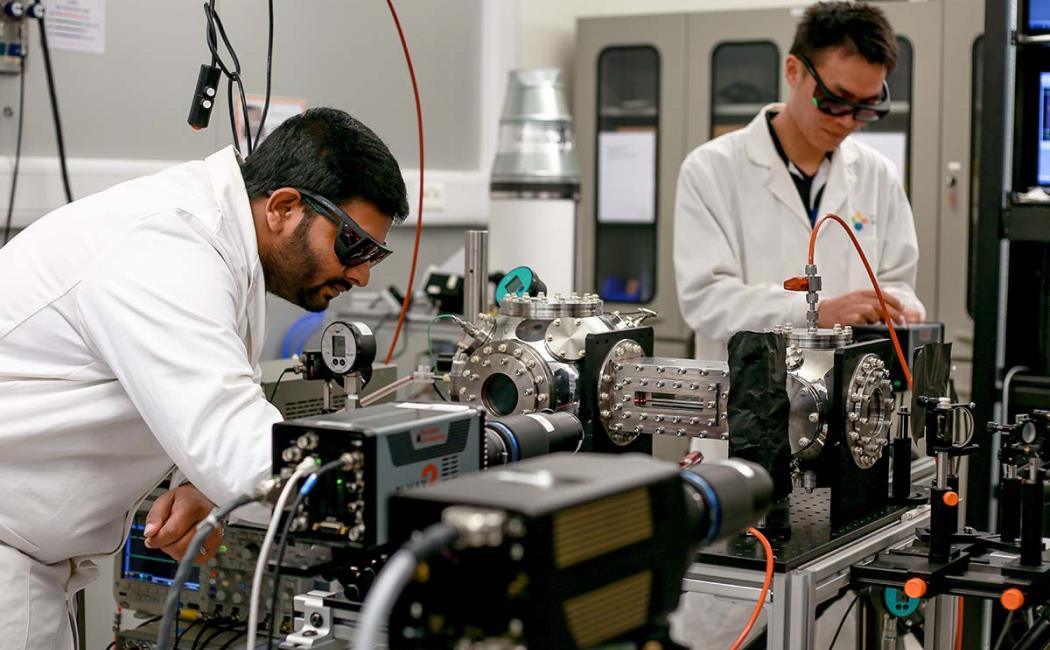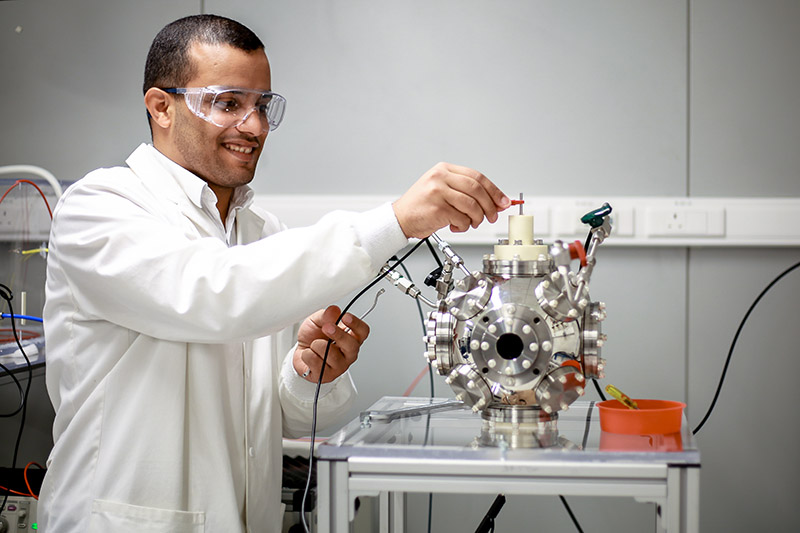The Clean Combustion Research Center and the Boeing Company have collaborated on research projects since May 2015. The context of these projects is aircraft fire and explosion hazards; and their main objective is to provide a better understanding of the mechanisms involved during these dramatics events. Specifically, in two ongoing projects “Characterization of flame quenching processes in combustion arresters” and “Radio frequency ignition hazard”, groups headed by William Roberts and Deanna Lacoste will investigate how new materials and new sensors can change ignition and fire propagation threats in aircraft.
Flame quenching processes in combustion arresters
“After designing and building a lab scale experimental model of combustion arresters used in aircraft fuel tanks, we identified one of the most important parameters affecting the quenching process--the propagation speed of the combustion front”, explained Prof. Roberts. “Keeping all the other parameters constant (fuel, equivalence ratio, pressure, etc.), the speed of the flame can change the quenching distance by more than a factor of two. This was a new result; and with Eddie Kwon and Jason Damazo from the Boeing Company, we decided to focus on understanding this velocity effect”, he said.
To reach this goal, Dr. Peng Liu (post-doctoral fellow), and Ariff Magdoom Mahuthannan (PhD student), are performing measurements with an advanced optical diagnostic that allows simultaneous measurements of the temperature field and the hydroxyl (OH) radical density during quenching events. This technique, called two-color planar laser induced fluorescence, has been validated for numerous combustion configurations, but it remains a challenge to implement in a constant volume combustion chamber, for which single shot measurements are necessary.
“The current results are promising and we hope that in the coming months, we can propose a model of the effect of the flame velocity on heat transfer and radical quenching by the surface”, said Ariff Magdoom.
Dr. Abdeldjalil Reguig
Radio frequency ignition hazard
“Wireless communication between different devices is not neutral in terms of the ignition hazard. For example, wireless sensors transmit data via radio frequency (RF) signals, and under certain conditions, RF signals can ignite combustible mixtures”, Prof. Lacoste explained.
The aim of this project is to better characterize the ignition threat by RF electric fields, under conditions relevant for aircraft safety, i.e., for gas pressure ranging from 0.1 to 1 bar. This research, started in March 2018, will be a combination of experimental and analytical investigations. In collaboration with Eddie Kwon and Jason Damazo, the design of the experimental setup is nearly complete.
Post-doctoral fellow Abdeldjalil Reguig is currently building the ignition cell. The objective, within two years, is to characterize ignition hazard for a large range of RF signals and to provide a data base and a comprehensive model that could be used for validation of numerical simulations and for the extrapolation to other conditions.
Originally published in the CCRC Summer Newsletter, 2018.




